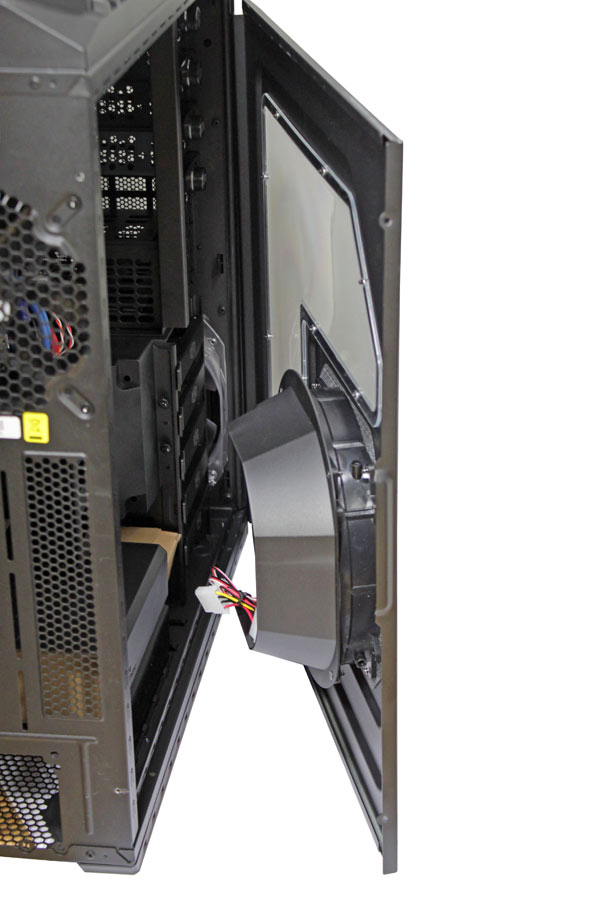Index
So, let’s move onto some GTX 590 Quad SLI goodness. We used two different GTX 590 cards – a reference and a factory OCed one. Mixing up different partners’ GTX 590 cards is possible, but not that Quad SLI will run at the slower card’s clocks.


Of course, consumption is an important piece of the puzzle if you’re looking to set up a 590 Quad SLI, since you’ll need a 1100W PSU or even higher. After all, you don’t want to risk a €1200 setup.
Our test rig occasionally drew up to 1099W, which is quite a lot despite the fact that it’s a high end machine. Due to this, we opted on using Sapphire’s Pure 1250W PSU. To be fair though, EVGA’s 4xSLI motherboard also contributed to high consumption as it consumes more than most other Quad SLI ready boards.

Next thing you need to address is the heat and two GTX 590 cards can definitely make some. You’ll need a large case with good airflow and a side panel fan wouldn’t hurt either to blow between the two GTX 590 cards. We used CoolerMaster’s HAF-X case.
It was relatively cold outside during our testing, 15°C, while our room temperature was at 25°C. However, we had to ventilate the entire room quite often, because it quickly became stuffy. And that’s not all – a really unpleasant smell was emanating from brand new graphics cards as well as the PSU, which was also new and suddenly running full power.
We suppose that the smell should go away after a few days of usage, but we unfortunately didn’t have that much time. Namely, partners want their cards back since Nvidia didn’t provide enough.



Using more than two displays on one graphics card has been AMD’s significant advantage, but the GTX 590 can finally allow Nvidia to offer a card with 3D Vision by default. The card as you remember comes with three dual-link DVIs and one mini-DisplayPort. With some VGA and HDMI converters, a GTX 590 user has all the video options at his disposal.
In Quad SLI mode, DVI #1 and #2 on each card must be used – the DisplayPort and DVI #3 outputs are not supported in this rendering mode ( Which means that Quad SLI also allows for maximum of four displays).

Testing
Aliens vs Predator, Unigine Heaven tessellation and Tess Mark testing went without a hitch but 3DMark 2011 refused to finish testing at Extreme settings several times. Then, we had some trouble in Metro 2033. We’ve seen that our colleagues from Tom’s Hardware managed to finish Metro 2033 at 2560x1600 4xAA and 16AF, but we couldn’t even start the benchmark. However, a single GTX 590 ran just fine.
We did not forget the HD 6990, we simply did not have two of them.
Aliens vs Predator

Metro 2033

3DMark 2011
Unigine Heaven
TessMark



